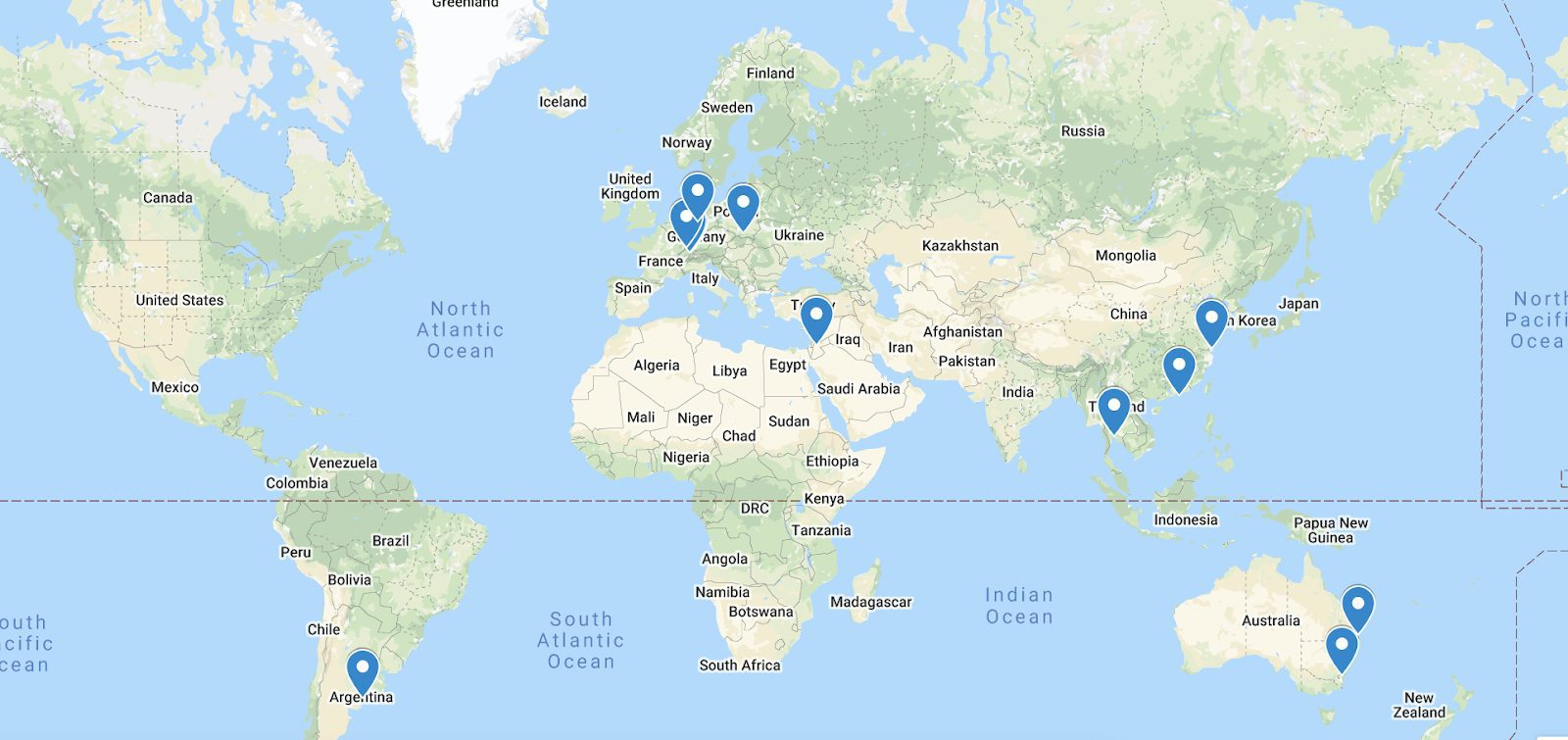2020: The Year Teachers Are Valued
There is no doubt that 2020 is a year that none of us will forget. We are experiencing for the first time in a hundred years a truly global pandemic which so far has infected eight million people and claimed the lives of over 400 000 people and to which there is no apparent cure. Rich and poor countries alike have tried to stem the spread of Covid 19 with varying degrees of success. One solution has been to force people to lockdown in their houses and restrict movement. Schools have been forced to close and to teach online where possible. Out of these tragic and unique circumstances teachers have gained new recognition for the value of their work.
This blog post is based on discussions with teachers (at all levels from K to 12) and a small survey that I undertook with them. Geographically they are spread considerably, teach in both public and private schools, and teach a variety of national and international curricula. My thanks to them for their willingness to share their thoughts.

Geographical Spread of Participants
Why has 2020 been a year of recognition for teachers?
This year has been like no other in my memory of education. Teachers have been formally recognised by politicians as “essential workers”. Australian Prime Minister Scott Morrison said this in a video presentation to teachers:
“We will lose many things in the course of fighting this virus. One thing that I know teachers are united on, with their parents, is we do not want one of those things to be the loss of a child’s education, giving up a whole year of their learning.”
It was also an admission of teachers’ importance in their prime role of education. Elsewhere in the world, politicians in the UK, Germany and Canada have recognised the value of teaching for the future of their countries. In Switzerland they have talked about the Covid 19 generation that has not been able to finish school properly.
What have been the impacts of the Covid 19 lockdowns on us as teachers?
Without doubt the biggest impact of the lockdowns was the change to online teaching. This decision was often taken at very short notice and left schools and teachers with little time to prepare. At the time of writing there are still many countries where schools are closed and in others, where there has been a return to normality, online teaching occurred for 8–10 weeks. Many of the teachers that I contacted for this post indicated that they were having to spend more time working to prepare lessons and provide feedback for students.
Did you find that you were spending more or less time in preparation for teaching online?
Online teaching has demanded the following from teachers:
a. The need to learn the complexities of the delivery platform for lessons. Several teachers had never used any of the platforms (My Teams, Google Meet, Zoom, Cisco Web Ex, Instagram, Skype, Moodle and Loom ) before they were forced to embrace them. However, 85% of the group I surveyed were extremely happy with the performance of the software and now felt comfortable in using it.
b. It required teachers to rethink how they were going to present lessons and also to distribute materials essential to learning. This led teachers to trial new software and apps and many colleagues found this to be really stimulating. In addition, they had to set up forums and breakout rooms for discussions. These were typical comments about this challenge:
“I had to review my material. I learnt new digital skills.”
“Professional development in programs and flexibility.”
“I used the online IB courses I have done to model the way I set up and ran the online platform and forums (‘learning engagements’).”
c. It has demanded a coordinated school approach to running an online programme. The best results have come when the school has a dedicated platform which has been communicated to the students and parents and has also created an online timetable. However, that was not the case in all situations.
Did you follow your normal teaching timetable online?
Sari Beth Rosenberg, a teacher in New York, relates in her blog, “Teaching in the age of coronavirus – the start”, how chaotic her own experience initially was in her school where teachers were using different platforms and overwhelming students with messages. It must also be noted that teachers of primary age children found it necessary to modify their timetables as the younger students were not able to concentrate for so long.
d. Consider how we can provide feedback to students. This produced some contrasting responses, with this response being typical of the more positive reactions:
“I could give more students individual feedback.”
However, others found this a frustration:
“No immediate contact and conversations in teaching lessons with students, as well as no immediate feedback on their work.”
e. Concern about online marking and assessment. This year in many countries final exams were cancelled. The students’ final grades were going to be awarded on the teachers’ predictions of performance. Many teachers based these predictions on coursework and work done online throughout the year. This forced teachers to focus on their own organisation of assessment, as one respondent noted:
“Better organisation of online marking and assessing was a necessity for me.”
f. Focus more on teaching. Teachers commented on the fact that they were less distracted by non-teaching tasks in schools. A typical comment on the advantages of online teaching:
“I could really focus on my teaching, rather than the other ‘little jobs’ that always pop up. My students had the bulk of my attention, unlike at school where I am doing so many other little tasks that teaching becomes a secondary focus, rather than the priority (sad but true).”
What were some of the challenges of online teaching?
i. One major problem has been access to a digital device
In government-run schools where there is a huge difference in socioeconomic backgrounds, some homes do not have a digital device, which puts those students at a disadvantage. This also was a problem when the parents were working from home and there were other siblings learning online.
“Students with technical problems or families who could not help them had difficulties in keeping up with the work.”
This comment from a German public school teacher is one which I have heard many times and is reflected in a UK report on online learning that indicated “Limited or no access to technology was a problem for 23% of school pupils in the UK”.
ii. Lack of Interaction with students
A common concern of teachers was a lack of discussion and questions from many students. It was hard for teachers to see if students had understood the instruction they had been given. Some typical comments included:
“There was an inability to get visual cues from students and so harder to assess their understanding.”
“Keeping in touch with all students throughout the lesson. Not being able to discuss and explain issues freely.”
“No immediate contact and conversations in teaching lessons with students, as well as no immediate feedback on their work.”
iii. Student disengagement with lessons
One issue that regularly came up in discussions was that some students simply seemed to be present online without really being willing to contribute. A typical comment was this:
“The weaker students withdrew from the lesson and did this consistently!”
“A few kids ‘dropped off the radar’.”
“It wasn’t as engaging for the less self-directed teenagers.”
iv. Both teachers and students found that they were spending too much time online
Many younger students found being online for up to six hours a day simply too much for them and complained of being tired at the end of their online school day. They found that their concentration was wavering. Moreover, several teachers found being in front of the screen teaching all day was also too much.
“’Screen daze’ – my body/brain felt wiped out by so much screen time.”
“Migraines from too much screen time.”
v. Technical issues
The quality and speed of internet connections varied a lot, and as a consequence, some students were literally dropped out of lessons and sound and vision were not always optimal. A response which epitomises this was:
“Connection speeds and sound quality … were a problem.”
What have we learnt from this period of online teaching?
i. The importance of human contact in teaching: A point that was made by all respondents was the relationship they had with their students and how this was challenged by purely digital learning. This was particularly so for primary students who struggled to keep on task and at times lost motivation:
“I need a face to face audience with which to freely interact, debate and discuss.”
“That I really have to see my students and interact with them in direct contact. Online teaching could never substitute real lessons.”
“How important the personal contact with the students and their learning process is.”
ii. We need to ensure there is some training and support for both teachers and students using the software. Both teachers and students struggled initially with the software and also did not know what to do when problems arose. This was something that received a few comments, such as this one:
“IT was the main heartache, after the initial need to learn how to navigate the changed platform.”
iii. Be better organised with materials for online teaching. There were several respondents who had already organised their resources and materials online with a set number of tasks, using the interactive sessions just for discussion groups. This seems to have worked particularly well for older students. One respondent said that this reflected the approach used in IB online courses.
iv. Have shorter lessons with students and in smaller groups. Several respondents indicated this would be a lot more effective in involving all of the students and keeping their focus better.
“I would split the classes into two halves and have shorter lessons so more can be actively involved in each session. The quiet students tended to disappear. Quality rather than quantity!”
“Smaller group online teaching worked very well.”
v. The importance of sharing our experiences with our colleagues: It would help us as teachers to be able to share our experiences with our colleagues, discussing both strategies and software that worked online.
Blog articles




